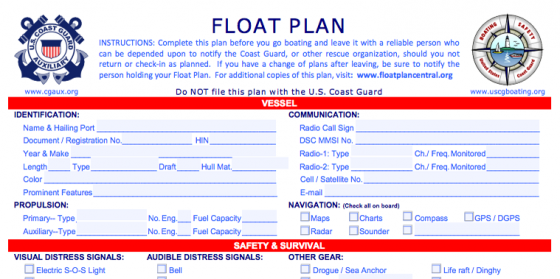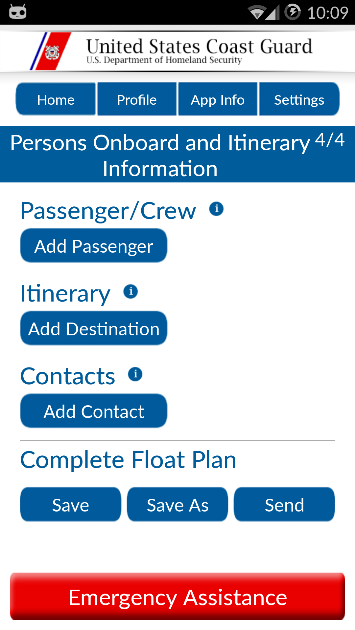
Occasionally a boater will confess that he or she never bothers with a float plan. The usual excuse is that they only boat in popular local areas where they’d be spotted in case of an emergency and rescued immediately. That may sound reasonable, but does a boat bobbing on the hook in a cove convey outward signs of distress while the skipper’s down below feeling woozy or in pain?
“I don’t want to bother — I just want to hitch my boat to the trailer and go!” is another excuse. What would a loved one say to the authorities if they eventually suspected you might be in trouble but had no idea how to narrow down the search area? Without helpful information to narrow the search, precious time ticks away (and the weather or your predicament may worsen) while the USCG issues a non-specific “missing mariner” notice to all rescue crafts, boaters, and volunteers.
Once you grasp all the things that might happen because you kept your boating plans hush-hush, we’re betting you’ll spill the beans every time you head out (don’t forget to give your land lookout a heads up when you return to shore after a fun and safe day).
A float plan, is a pretty simple way to ensure the safety of everyone aboard your vessel, whether on a multi-day adventure or an afternoon outing. I know many of you will say its not necessary you aren’t going far and you will be where everyone can see you. But suppose you are on an ordinary getaway to your favorite destination; suddenly the fog rolls in, the engine dies, or the wind quits blowing. Or worse, your back goes out while you’re attempting to raise the anchor and you can’t move. You realize you have no cell phone reception. You are either literally or figuratively up the creek without a paddle. All those people who see you, won’t know you are in trouble; and no one will know where to look hours later.
Whether temporarily stranded or in need of medical attention (when every second counts), you’ve increased the chances of a timely rescue because you shared your float plan with a family member, friend, or someone at the yacht club or marina. Once you fail to return at the time you assigned, the nautical wheels are set in motion to bring you back to port safe and sound.
A float plan may be as simple as a note saying, “I’m heading to Tranquil Cove today and expect to be back around 7:00 pm.” It can also be detailed — yet not very time consuming. There are templates available so you can fill in never-changing information including your boat type, length, color, and vessel name. Attach a photo of the boat and duplicate the semi-completed plan. Then you only have to jot down who’s aboard, the particular day’s destination, and an expected return time before handing it to a responsible person. Safety experts advise you not to leave the float plan on the dashboard of a car or a boatyard bulletin board, as someone with disreputable intentions will see how far away from home you’ll be and for how long.
The U.S. Coast Guard (USCG) has a mobile app with a float plan component among its safety features. Personal information is stored on the phone but not transmitted unless the user chooses to send it, so authorities are neither tracking you nor logging your location unless a need arises.
